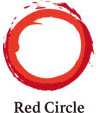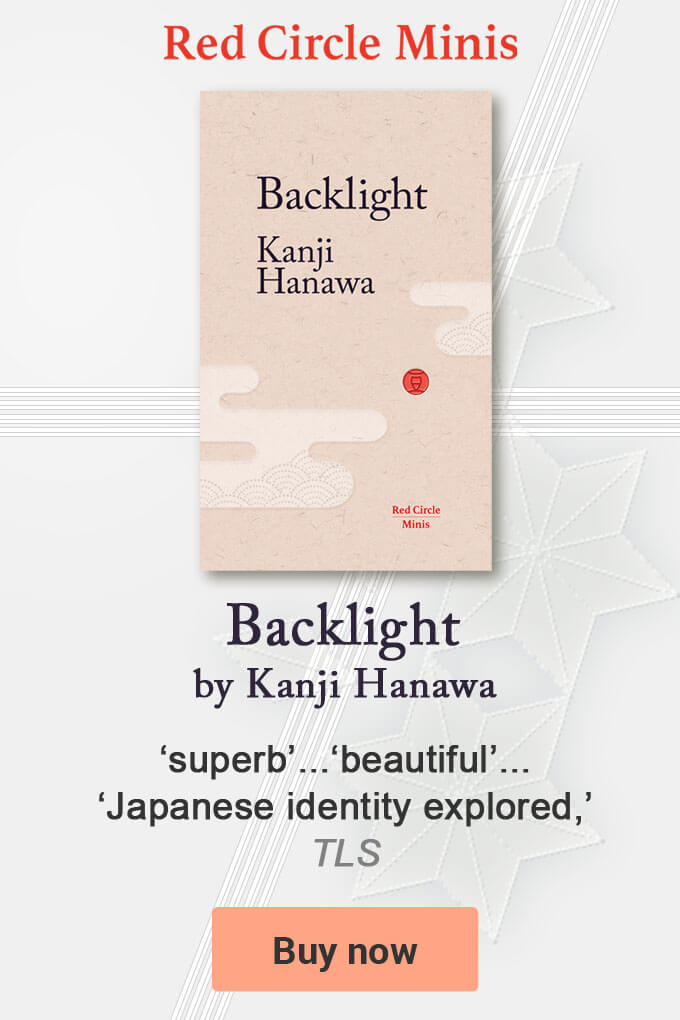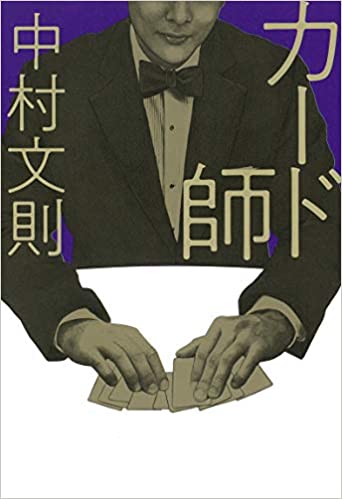 Cover of The Card Shark (Kaado-shi), by the multi award-winning Japanese author Fuminori Nakamura, published 7 May 2021.
Cover of The Card Shark (Kaado-shi), by the multi award-winning Japanese author Fuminori Nakamura, published 7 May 2021.Nakamura’s latest gripping story, released in book format for the first time on 7 May, which has playing cards – spanning tarot cards to poker and blackjack cards – as its central plot motif, was initially published as a serialised novel in the Asahi Shimbun.
Nakamura, who is known for his fast-paced narratives that hypnotically blend psychological suspense with literary fiction, is busy promoting his latest book, which features a dealer at an underground illegal casino who is also an in-demand card reading fortuneteller that doesn’t in fact believe in this particular art of divination, at online events as well as in media and book website interviews.
That said, you don’t need to be blessed with a talent for prescience or card reading to predict that now this tale is being released in book format, after appetite-whetting chucks being flashed before readers eyes in the morning and evening editions of a major Japanese national newspaper, this latest Nakamura narrative will turn into another major commercial success for the author and his publisher.
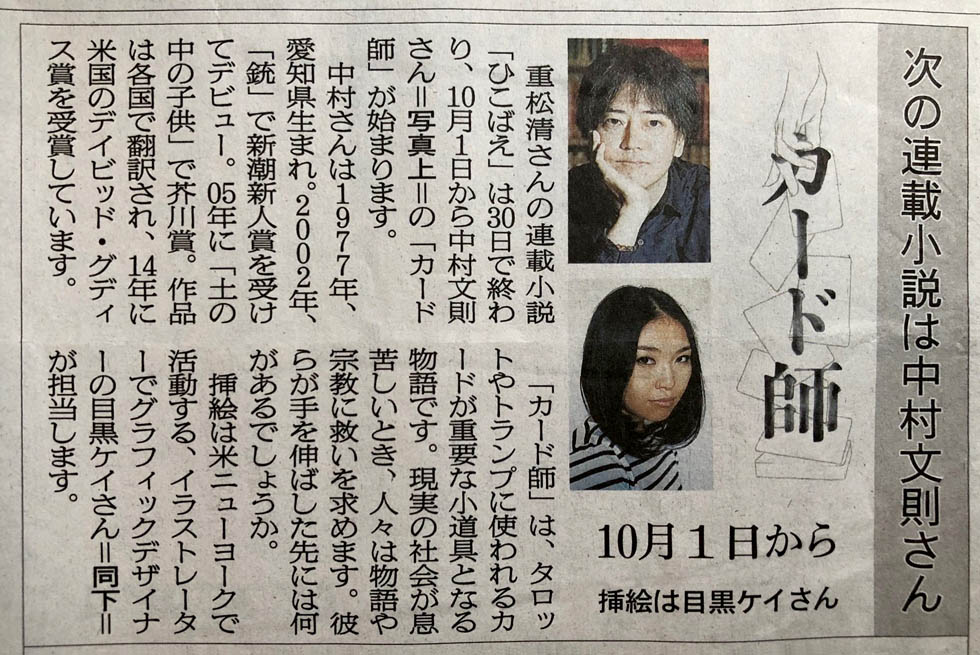 Announcement in the Asahi Shimbun of the serialisation of The Card Shark by Fuminori Nakamura. Photo: Red Circle Authors Limited.
Announcement in the Asahi Shimbun of the serialisation of The Card Shark by Fuminori Nakamura. Photo: Red Circle Authors Limited.As in many countries card games are very popular and have a long history in Japan. Western-style card games arrived in Japan in 1543 with Francis Xavier (1506-1552) and his crew, and the most commonly used Japanese word for cards, karuta, comes from the Portuguese word carta. Japan also has its own unique and colourful cards and enjoyable card games such as hanafuda.
All of which has given Nakamura, known for his clever use of strategic withholding techniques in his plots and sometimes dubbed the Japanese master of noire, a lot to draw from for plot twists and literary lags as well as cultural context.
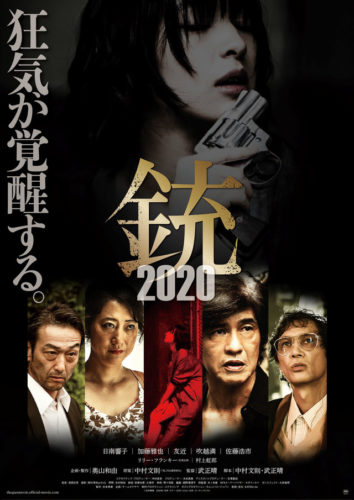 Promotional poster for The Gun 2020, Ju 2020, directed by Masaharu Take.
Promotional poster for The Gun 2020, Ju 2020, directed by Masaharu Take.The novel, published in English translation in 2016, translated by Allison Markin Powell, is a spellbinding tale of a young man toying with a seductive gun and his future that grips the reader’s attention right to the very end despite the narratives beautifully crafted simplicity. It won the 2002 Shincho Shinjin Prize and instantly put Nakamura on the Japanese literary map.
This second film, titled The Gun 2020, Ju 2020, is a companion like spin-off from the book and its first film adaptation by the same director, which was released in 2018, a film that led some reviewers to compare Take to the internationally acclaimed Japanese director Nagisa Oshima (1932-2013).
In this latest film version the protagonist is no longer male but a neglected weapon-wielding woman named Toko living on the edge, played by Kyoko Hinami, who also acted in the first film.
The film script was developed by the director in collaboration with Nakamura. The author has released a free to download PDF on his website which includes his reworking of the first section of his original novel replacing the protagonist, a young male Tokyo-based university student Toru, with a cash-starved woman with a blemished past struggling to cope with life.
Nakamura says he re-wrote this section of the original novel to get a sense of how the new narrative might feel and evolve with this major change to its plot. The file also includes an early draft script he wrote for the film as well as notes and explanations on it.
Several of Nakamura’s books, in addition to the two gun films, have now been adapted for film in Japan. Nakamura hopes that providing access to the information on the latest film adaptation will interest his many fans and give them an insight into how narrative development occurs when literary fiction meets collaborative Japanese movie making.
Nakamura is not only an author who thinks about his readers and their reactions but also one that makes his opinion and thoughts public when he thinks it is necessary, and often rather frankly. He cares deeply about what is going on around him. Booksellers, for example, speak very highly of him and the time and effort he puts in at events and book signings they arrange, and his media interviews are rarely boring.
The original 2018 film adaption was described by critics as ‘a blast of stylish nihilism’ and the new 2020 film as ‘locked, loaded and nowhere to go. A feminist thriller it is not’.
The DVD of the film’s was released in April and the information published on Nakamura’s website will no doubt provide demand-stimulating additional insight and context.
The script drafts evolved during the production process fusing new ideas and dialogue as well as inspiration from multiple sources in a highly collaborative approach, which Nakamura welcomed. He thought keeping things open and flexible would lead to the best creative outcome in film.
However, Nakamura says that if he were to pen a book based on the 2020 film spin-off its narrative would be less melodramatic and much more “quiet”.
 Promotion banner from an Asahi Shimbun Shuppan campaign for The Card Shark (Kaado-shi), a new novel by Fuminori Nakamura published in hardback 7 May 2021
Promotion banner from an Asahi Shimbun Shuppan campaign for The Card Shark (Kaado-shi), a new novel by Fuminori Nakamura published in hardback 7 May 2021 About Red Circle:Red Circle Authors Limited is a specialist publishing and communications company that conducts bespoke projects on behalf of a carefully selected and curated group of leading Japanese authors. Red Circle showcases Japan’s best creative writing. For more information on Red Circle, Japanese literature, and Red Circle authors please visit: www.redcircleauthors.com.
About Red Circle:Red Circle Authors Limited is a specialist publishing and communications company that conducts bespoke projects on behalf of a carefully selected and curated group of leading Japanese authors. Red Circle showcases Japan’s best creative writing. For more information on Red Circle, Japanese literature, and Red Circle authors please visit: www.redcircleauthors.com.

